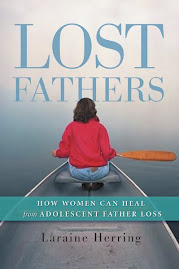Math.
See the poor kitty up there? This was me, staring at the green-covered algebra I book in ninth grade. It was me again in algebra 2. And then, three years later, in college algebra. See the poor kitty's answer? That was always my problem. The answers I came up with didn't necessarily fit the problem, though they were viable solutions. Does not this kitty's response make more sense? Do you not want to ask the kitty, "Dude! What were you thinking? There are ways of preventing an excess of kittens!"
I passed geometry by grace alone. The teacher knew I had no chance at any career involving numbers. I wrote the breathtaking saga of the Isosceles Triangle Family and its adventures through the land of Proofs and Puzzles. Do I see a Scalene Triangle lurking in the bushes? Get back, nave! Back to your own land of Scales! Equilateral Triangles were not very interesting story subjects, precisely because they were so even-keeled. No drama. No conflicted innards to delve into. They were the Switzerland of the triangle world, so unless you're hiding money in a Swiss bank account, there's not much left to do with them in a story. Every geometry test resulted in one more chapter in the Isosceles Triangle Family saga. Now that I've been a teacher for more years than I care to think about, I like to think that while this poor shmuck, the geometry teacher by day, baseball coach by night, was pouring his fourth glass of whiskey on another lonely Saturday night, he got a little laugh.
Last night, by a bizarre set of circumstances, I had a graphing calculator in my hands. A Texas Instruments 83, to be exact. It's a frightening piece of equipment, but for the record, it's not nearly as cute or as cool as an iPad. I suppose it does things that matter somehow. Lines. Slopes. Tangents. I tried to draw a kitty on it, but I couldn't figure out how to turn it on. Just holding a calculator like that brought me back to high school. My Texas Instruments calculator had a red display, and the most exciting thing I could do with it was type in 4377, turn the calculator upside down to spell 'hell'. To this day, I cannot punch in the numbers correctly in an arithmetic sequence. If you're doing division, which one goes in first? It's never the one you think. I figured out that if I ended up with a staggering decimal number with no end in sight, I probably need to reverse the way I put the numbers in. I'm adaptable.
2 x 3 = 5 was the mistake that followed me throughout my brief and fiery relationship with math. I do actually know that 2 x 3 = 6, but somehow, when I had to show my work in equations, that was the mistake I always made. One number off shouldn't make that much difference. But, in the inflexible world of math, it does. In came real numbers, imaginary numbers, x, y, and z axes, parabolas, (why??) and lots and lots of random letters, like Campbell's alphabet soup, suddenly dancing through the math books. As I've gotten older, I have more respect for math, but I have no concept of what it really is, what it can do, and why we need it. They had me when two apples and three apples equaled five apples. But once two apples plus the coefficient of x minus pi (not chocolate) and three apples equaled x - n + 4, I was onto a new romance deep in the hallowed halls of literature. The roots of my innumeracy are so deep in the earth no one can untangle them.
It drives me crazy when educated people misuse its and it's. Yet, I have two master's degrees and I have the mathematical literacy of an average third grader. All my classes have grading scales in multiples of ten. Every class has a total of 100 points -- no more, no less. I am a big fan of 10, and I don't see how expanding much beyond anything that can be wrapped in the big wide belly of a 10 would make my life easier. If it can't be done on my calculator with the REALLY BIG numbers and five functions only, then I don't really need to do it.
Here's a page from the TI-83 manual's attempts to help you understand what it can do:
A small forest of 4,000 trees is under a new forestry plan. Each year 20 percent of the trees will be harvested and 1,000 new trees will be planted. Will the forest eventually disappear? Will the forest size stabilize? If so, in how many years and with how many trees?
1. Press MODE. Press down-arrow, down-arrow, down-arrow, right-arrow, right-arrow, right-arrow ENTER to select Seq graphing mode.
2. Press 2nd (FORMAT) and select Time axes format and ExprOn format if necessary.
3. Press Y=. .If the graph-style icon is not(dot), press | |, press ENTER until (dot) is displayed, and then press ~ ~.
4. Press MATH~3 to select iPart( (integerpart) because only whole trees are harvested. After each annual harvest, 80 percent (.80) of the trees remain.
Press . 8 2nd (u) (() X,T 0, n) - 1 ) to define the number of trees after each harvest. Press + 1000 ) to define the new trees. Press † 4000 to define the number of trees at the beginning of the program.
5. Press WINDOW 0 to set nMin=0. Press down arrow 50 to set nMax=50. nMin and nMax evaluate forest size over 50 years. Set the other window variables.
PlotStart=1 Xmin=0 Ymin=0
PlotStep=1 Xmax=50 Ymax=6000
Xscl=10 Yscl=1000
6. Press TRACE. Tracing begins at nMin(thestart of the forestry plan). Press ~ to trace the sequence year by year. The sequence is displayed at the top of the screen. The values for n (number of years), X (X=n, because n is plotted on the x-axis), and Y (tree count) are displayed at the bottom. When will the forest stabilize? With how many trees?
(some symbols didn't translate into blog text ... not that I understand what they are...)
Here's my answer, courtesy of Mr. Theodore Geisel (Dr. Suess).
- "Mister!" he said with a sawdusty sneeze,
"I am the Lorax, I speak for the trees.
I speak for the trees, for the trees have no tongues,
And I'm asking you, sir, at the top of my lungs" --
He was very upset as he shouted and puffed --
"What's that THING you've made out of my Truffula tuft?"
- I am the Lorax! I speak for the trees,
Which you seem to be chopping as fast as you please;
But I also speak for the brown Barbaloots,
Who frolicked and played in their Barbaloot suits,
Happily eating Truffula fruits.
Now, since you've chopped the trees to the ground
There's not enough Truffula fruit to go 'round!
And my poor Barbaloots are all feeling the crummies
Because they have gas, and no food, in their tummies.
- Unless someone like you cares a whole awful lot,
nothing is going to get better. It's not.
- Catch! calls the Once-ler.
He lets something fall.
It's a Truffula Seed.
It's the last one of all!
You're in charge of the last of the Truffula Seeds.
And Truffula Trees are what everyone needs.
Plant a new Truffula. Treat it with care.
Give it clean water. And feed it fresh air.
Grow a forest. Protect it from axes that hack.
Then the Lorax
and all of his friends
may come back.
- Now all that was left 'neath the bad-smelling sky
was my big empty factory...
the Lorax...
and I.
The Lorax said nothing
just gave me a glance. Just gave me a very sad, sad backward glance.
He lifted himself by the seat of his pants and I'll never forget the grim look on his face
as he hoisted himself and took leave of this place through a hole in the smog without leaving a trace
and all that the Lorax left here in this mess was a small pile of rocks with one word.
UNLESS
Q4U:
If a faculty member is forced to attend 2.3 meetings per week, at a total of 3.5 hours of time, when she has 17.8 hours of student work to read and respond to, would it make more sense for her to travel to work by train or by bicycle or to go to the mall?
Not so hard, is it? 4377.











